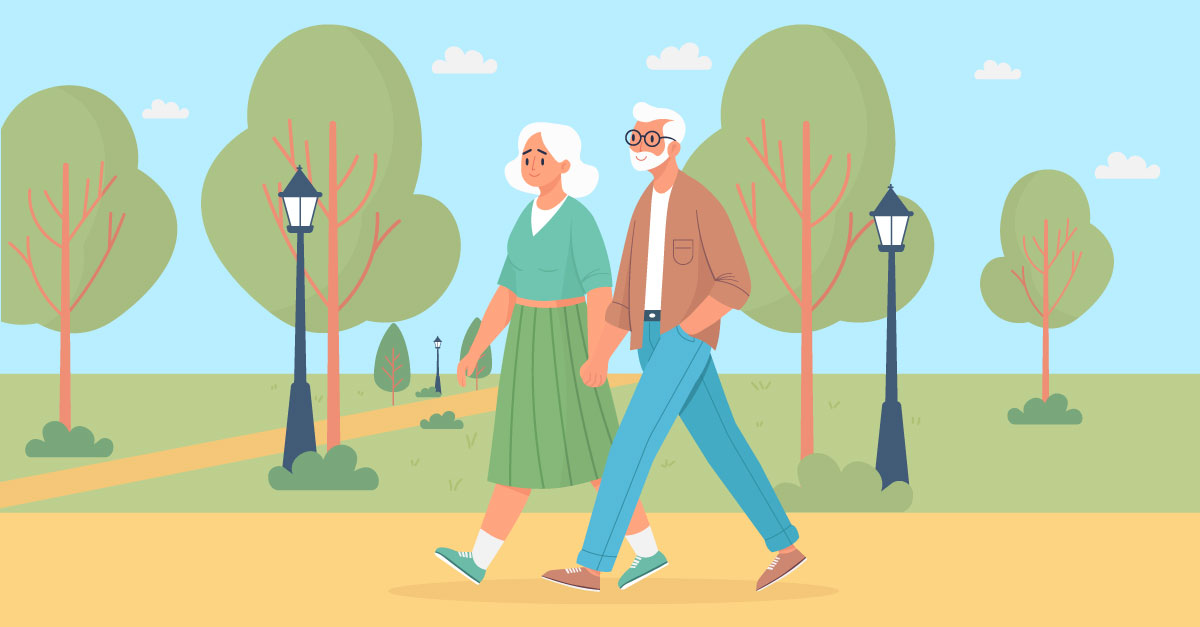Your bone health is key to your overall health and preventing injuries as you age. Bone loss is a natural part of aging that, if left untreated, can lead to weak or brittle bones (osteoporosis). More than 10 million Americans over the age of 50 are currently living with osteoporosis. Fortunately, you can slow bone loss as you age with the right lifestyle changes.
Keep reading to learn more about how your bone health changes as you age and what you can do to prevent osteoporosis.
What Is Bone Made Of?
From a young age, your bones are constantly growing and building to form new tissue. Collagen proteins create a framework to build new bone. This framework is filled with minerals — like calcium phosphate — that make bones hard and strong.
Inside your bones, there are specialized cells that help build new tissue and break down old tissue. Osteoblasts help make new bone, while osteoclasts break it down and resorb bone.
What Happens to Bone as You Age?
Bone is a living tissue that’s always remodeling itself. As you age, the balance between bone buildup and bone breakdown shifts.
Childhood and Young Adulthood
When you’re a child or teenager, your body creates more bone tissue than it breaks down. As a result, your bones become larger and denser. Most people reach peak bone mass — maximum strength and size of their bones — between the ages of 25 and 30. When you reach adulthood, the process of bone buildup and breakdown is about equal. This helps maintain your bone mass.
Older Adulthood
After the age of 40, the scales begin to tip. Your osteoclasts start to work more than your osteoblasts, meaning you begin losing bone mass. This is especially true for women going through menopause. Estrogen helps slow bone breakdown and resorption — without enough estrogen, you begin experiencing more bone loss.
Many men think that they aren’t at risk of osteoporosis, but this is a common myth. Older men are also at risk of losing bone mass due to low estrogen and testosterone levels.
Risks of Poor Bone Health with Aging
If you lose too much bone mass, you’re more likely to develop osteopenia or osteoporosis. Osteopenia refers to low bone mineral density (BMD), meaning you have less calcium and minerals in your bones. As a result, your bones are weaker than normal.
If osteopenia is left untreated, you’re at risk of develop osteoporosis. This is a bone disease caused by very low BMD and loss of bone mass. You’re more likely to fracture or break a bone with osteoporosis — especially in your wrist, hip, or spine. These breaks can cause severe pain, affect your mobility, and even result in disability.
Osteopenia and osteoporosis are known as “silent conditions” because they don’t cause any symptoms. Unfortunately, you won’t know you have them until you either have a bone density screening test or you break a bone. This is why it’s important to take steps to support your bone health.
Tips To Improve Your Bone Health
Want to keep your bones healthy and strong as you age? Here are some tips to help.
Take Calcium and Vitamin D Supplements
Calcium and vitamin D are key nutrients for bone health. Your body can’t make calcium on its own, so it’s important to get the minerals from your diet. You also need vitamin D to help absorb the calcium you eat. Our skin makes some vitamin D when we’re out in the sun, but many people don’t get enough sunlight.
The American Academy of Orthopaedic Surgeons (AAOS) recommends meeting your daily calcium and vitamin D requirements to maintain bone health. The AAOS suggests men and women ages 20 to 70 take 1,000 milligrams (mg) of calcium and 1000 international units (IU) of vitamin D every day. After age 70, men and women should increase their intake to 1,200 mg of calcium and 800 IU of vitamin D daily.
Get Regular Exercise
To help prevent osteoporosis in older age, it’s important to get enough exercise. When you walk, jog, or lift weights, it puts pressure and stress on your bones. Your body responds by making your bones stronger to prevent fractures or breaks.
The National Institute of Arthritis and Musculoskeletal and Skin Diseases (NIAMS) recommends a combination of exercises for bone strength, including:
- Brisk walking, jogging, or running
- Dancing
- Playing racket sports like tennis or pickleball
- Lifting weights, including weight machines, resistance bands, and bodyweight training (like pushups)
- Balance exercises like tai chi or lunges
Avoid Unhealthy Lifestyle Choices
Making healthier lifestyle choices can also help improve bone health. For example, smoking and drinking alcohol increase bone loss while decreasing bone formation. By quitting smoking, limiting your alcohol intake and eating more bone-boosting foods, you help slow bone loss. You’ll also improve your overall health.

